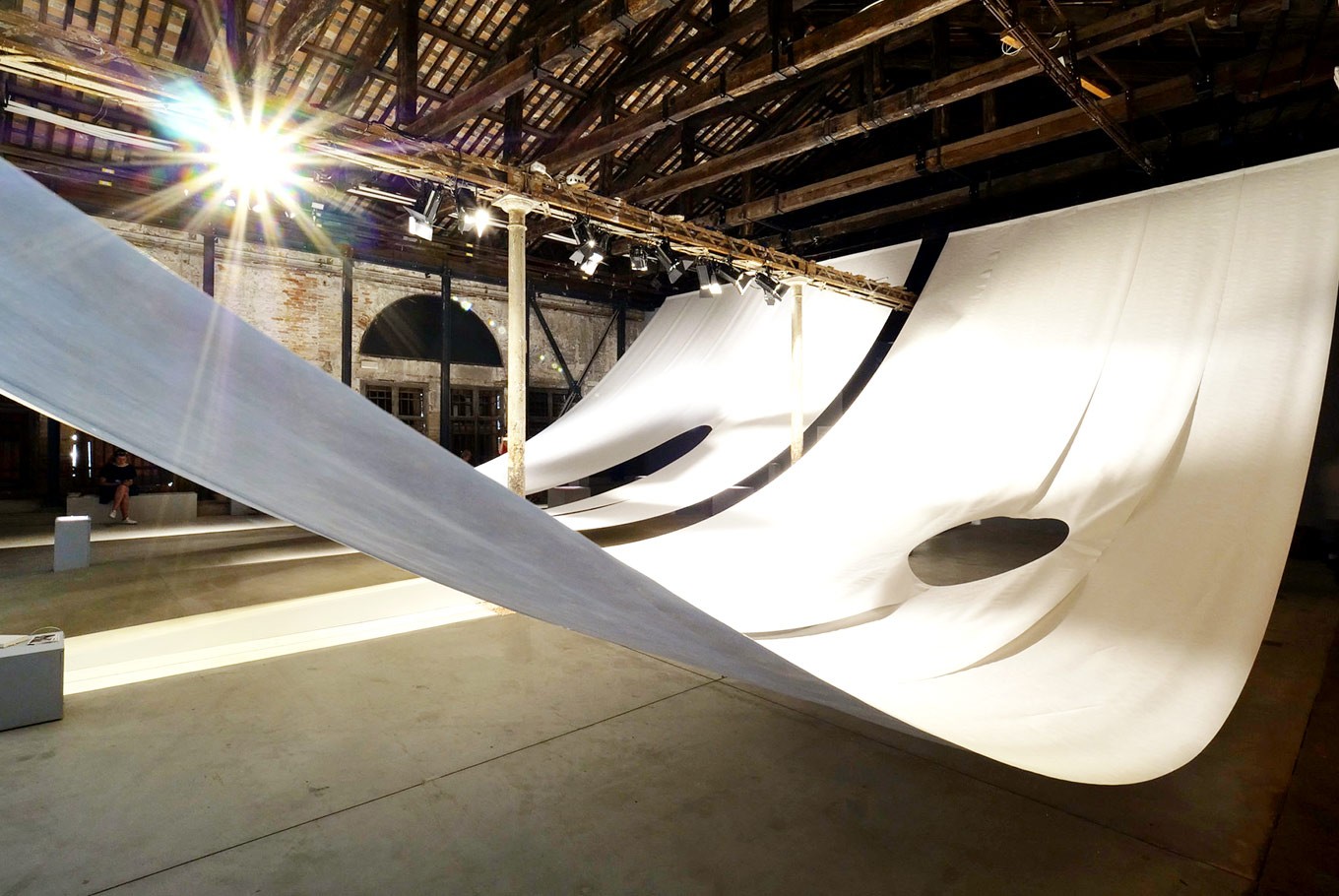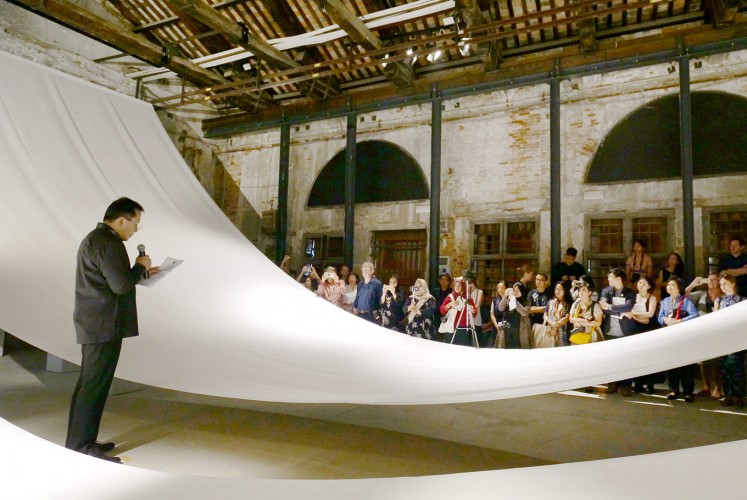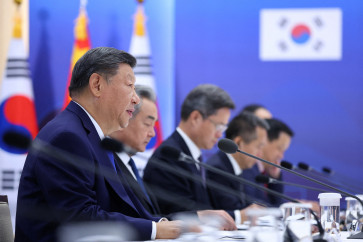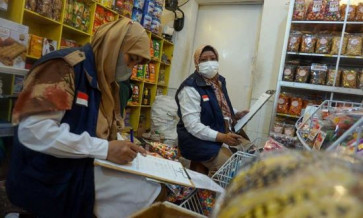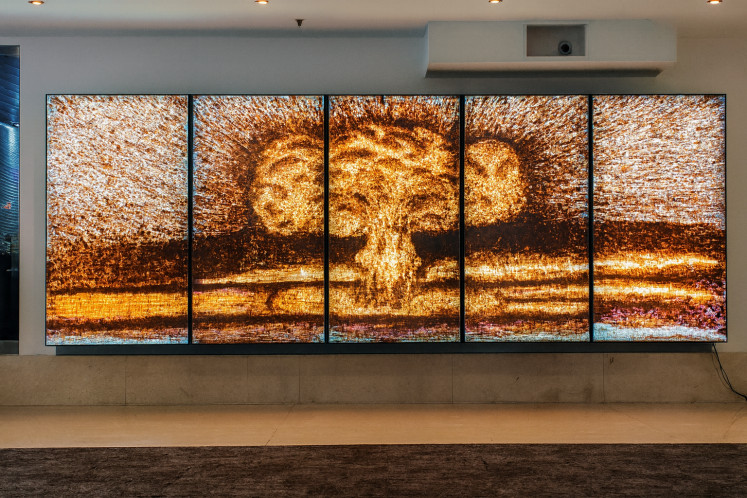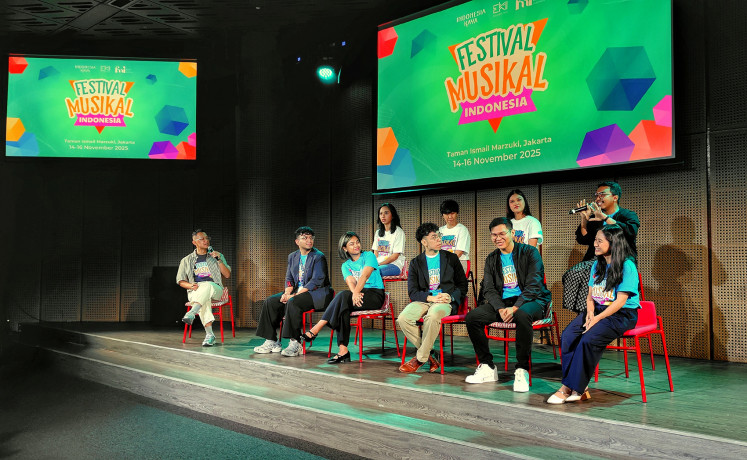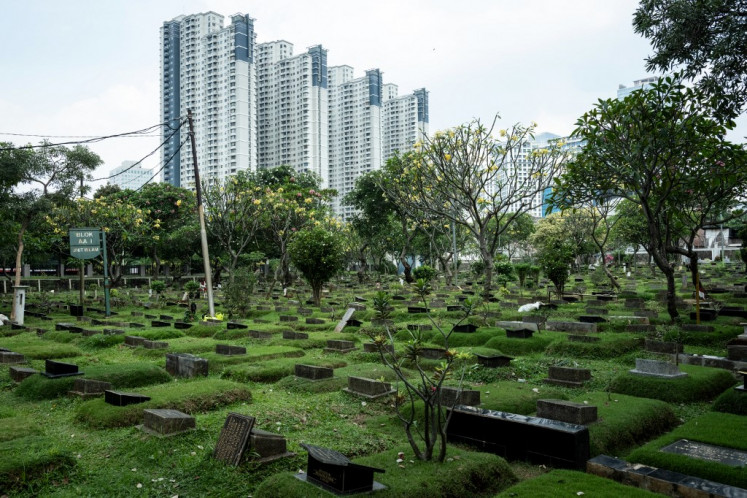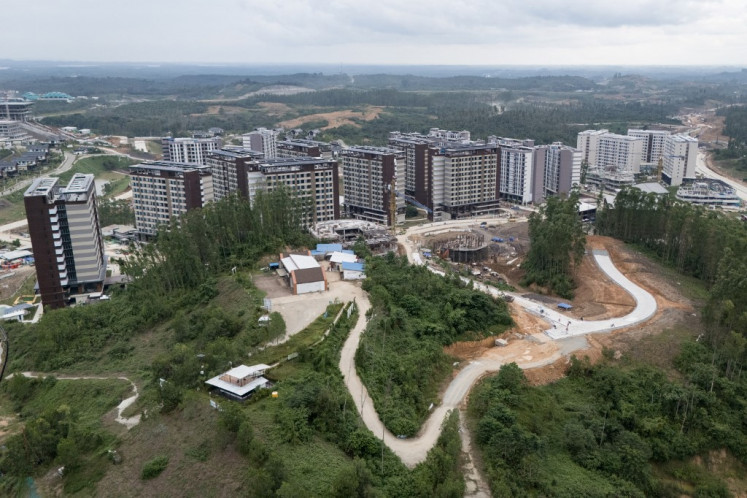Popular Reads
Top Results
Can't find what you're looking for?
View all search resultsPopular Reads
Top Results
Can't find what you're looking for?
View all search resultsIndonesia brings 'Emptiness' to Venice
“The design is a provocation, to put humans at the center,” said Indra.
Change text size
Gift Premium Articles
to Anyone
I
ndonesia did not have to look very far for inspiration for its pavilion at this year’s Venice Architecture Biennale, which was billed with the slightly oblique theme of “Freespace”.
"There are a number of traditional Indonesian spaces that take emptiness as their starting point,” said Ary Indra, an architect who was the chief curator of this year’s pavilion.
“Like rumah joglo [a Javanese house with a distinctive cone-shaped roof], pendopo [an open-air pavilion], and so on. We took our inspiration from home.”
Under his direction, Indonesia devised its second entry to the Venice Architecture Biennale, called Sunyata: The Poetics of Emptiness. Which isn’t to say that the pavilion looks like any other space traditionally encountered in Indonesia.
Instead, it takes the form of a swooping white parabola, stretching from the floor to the ceiling of an exposed-brick chamber in Venice’s Arsenale exhibition complex. The parabola is composed of 12 hand-cut and hand-sewn Tyvek paper panels, which a team of curators and architects spent a month installing in Venice before its grand opening on May 25. The biennale runs until Nov. 25.
There is also a sound component, derived from six months of travel across the archipelago, from Banda Aceh to Makassar, where sound engineers recorded “emptiness” at a variety of public spaces.
A 22-year-old sound engineer named Marco Victorio, who is still a student at the Glasgow Institute of Art, “remixed” the soundscapes to play in the chamber. “The installation has great acoustics,” he said. “We wanted to use ambient sound to make people more aware of the space.”
Welcome: Visitors attend the grand opening of Indonesia’s pavilion at the Venice Architecture Biennale in Venice, Italy. (Timur Angin/File)Sunyata is a Sanskrit word, most commonly used in Buddhist philosophy to denote emptiness or voidness.
“What’s tricky, of course, is how you then construct the void?” said Ardi Hartono, one of the two partners of Jakarta’s Dua Studio, which was contracted to build the actual installation. “We need a solid thing to make a contrast.”
They cycled through various possible materials, from fabric to metals, and finally decided on Tyvek paper, a high-density, water-resistant synthetic material sometimes used for insulation in astronaut suits.
The result is visually stunning and inspired many passers-by to literally stop in their tracks when encountering it within the sprawling Arsenale hall. The room-sized white arcs are something of a visual respite amid some of the information- and component-dense pavilions from other countries.
The material was of crucial importance for Indra who kept Indonesia’s last experience at this biennale in 2014 in the forefront of his mind.
“That time — Indonesia’s first time in Venice — they used glass and it was very tedious,” he said. “Paper is easy to transport, light and not very sharp.”
They ended up buying the Tyvek in Bristol, the United Kingdom, where it was about one-tenth of the cost it would have been in Indonesia.
“It was very difficult to construct,” he said. “There are 9,600 hand-sewn stitches just along the top edge.”
One immediate question raised by the delicate installation is how it will fare over the six months of the biennale’s run. Already on the first day of its opening, a young woman from Dua Studio was wiping off a coffee stain from the lower part of a parabola.
Indra was not too concerned. “People can’t resist touching the paper,” he said. “I told the team, if something happens, let it be.”
Foot traffic is part of the exhibition by design. “The design is a provocation, to put humans at the center,” said Indra.
The team: Chief curator Ary Indra (fourth right) introduces his team of curators at the pavilion opening. (Timur Angin/File)The curators invited a young Indonesian dancer to inaugurate the pavilion and she performed a modern, self-choreographed Javanese dance within the fifth and sixth panels of the parabola. Later on, visitors snacked on kue lapis(layered cake) and plates of nasi kuning (yellow rice served with various side dishes) under the arc of the installation.
The whole enterprise came within the purview of Indonesia’s Creative Economy Agency (Bekraf), which took charge of selecting the talent through an open competition for architects and designers.
“Indonesia wants to put its architects and architecture on the same level as those of other countries, to leverage our cultural institutions on the world stage,” said Boni Pudjianto, Bekraf’s director for international business development.
For Indra and his young team of collaborators, the whole process of exporting and representing an entire country’s design culture is a valuable exercise in honing their vision.
“The big question in Indonesian architecture is always: ‘What is Indonesian architecture?’” joked Indra. “This is one way in which to figure that out.”

